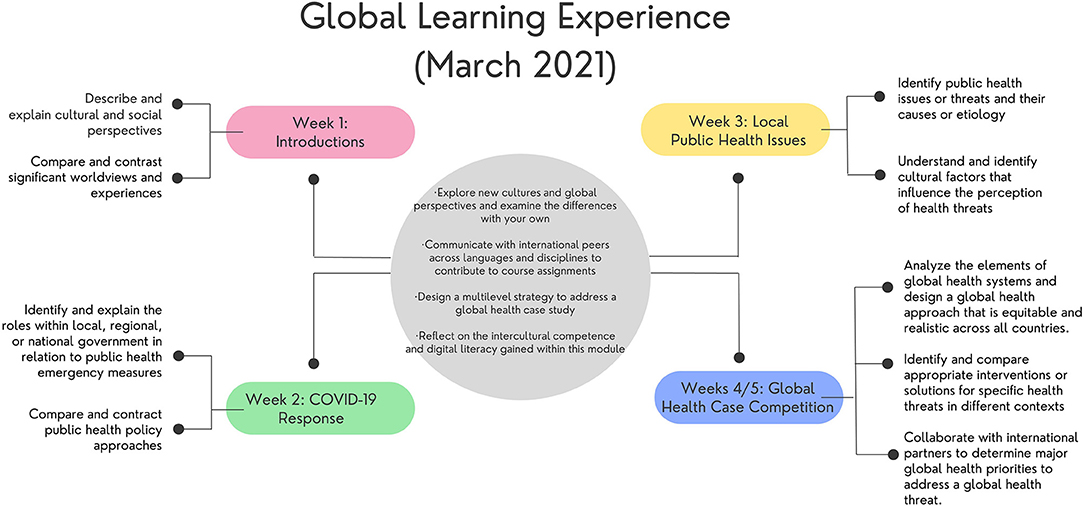Successful cultural immersion experiences include Japan’s homestay programs and Spain’s language immersion schools. India’s volunteer tourism projects exemplify cultural exchange.
Exploring diverse cultures around the globe is a transformative journey that fascinates adventurous souls. Such experiences extend beyond mere travel; they involve active participation in the local customs, traditions, and daily life, fostering a deeper understanding and appreciation of different societies.
A successful cultural immersion can redefine perspectives, encourage global citizenship, and create bonds that resonate with travelers long after they return home. Whether it’s living with a host family, engaging in community projects, or learning a new language, these adventures offer more than just memories—they provide insights into the complexities of human culture. Tailored programs across the world are designed to facilitate these profound encounters, promising authentic interactions and life-enriching experiences.
The Essence Of Cultural Immersion
The Essence of Cultural Immersion captures the heart of what it means to truly engage with a new environment. Rather than observing from a distance, it’s about jumping into the daily life and routines of local people. It’s an adventure where the destination is not just a place, but a new way of seeing things.
Going Beyond The Tourist Experience
To truly understand a culture, one must step off the beaten track. This means bypassing the usual tourist spots. Instead, find where locals eat, play, and relax. Here, real stories and traditions come alive. Let’s see how this deeper engagement benefits travelers:
- New perspectives: Authentic interactions bring insight into local customs and beliefs.
- Richer experiences: Discover hidden gems that typical tourists never see.
- Genuine connections: Form lasting friendships with people from different backgrounds.
Embracing The Local Lifestyle
To be part of the local fabric, immersion should involve everyday activities. Shop at markets, use public transport, or attend community events. Here are steps to live like a local:
- Language basics: Learn key phrases to interact and show respect.
- Participate: Join in traditional festivals, or local sports.
- Volunteer: Give back to the community and understand its challenges.
By embracing the local lifestyle, travelers walk away with memories and stories that last a lifetime. More importantly, they gain a sense of belonging in a world far from their own.

Credit: www.valtech.com
Journeys Through Language
Embarking on a journey through language opens doors to the heart of culture. We take deep dives into society, soaking in the nuances that make each place unique. Let’s explore how language serves as a bridge to a world rich with new understandings and vibrant connections.
Language Learning As A Gateway
Language is more than words and grammar. It is the soul of a culture.
Learners worldwide find joy in expressing thoughts in a new tongue. They unlock local traditions and form bonds that last a lifetime. Here are key methods they use:
- Immersion schools: Dive into language full-time
- Homestays: Live with native speakers daily
- Language exchange meetups: Practice with peers
These tools allow learners to step into local shoes. They absorb colloquialisms and slang. Cultural events become accessible, and friendships flourish.
Real-life Stories Of Linguistic Integration
Individuals from all over have shared their journeys of linguistic immersion. Each story is a testament to the unity language can foster.
| Name | Language | Experience |
|---|---|---|
| Anna | Spanish | Lived with a host family in Spain for a year |
| John | Japanese | Joined local clubs to practice every day |
| Maria | French | Volunteered in France using only local dialect |
Anna found a second family. Local dishes, festivals, and daily interactions became her classroom. John’s commitment to Japanese tea ceremonies and martial arts integrated him into communal life. Maria’s work had her using French in real scenarios, boosting her fluency.
These experiences showcase the profound impact of embracing a language. They remind us that learning can be transformative.
Culinary Adventures
Food ties us to places and people like nothing else. Eating is not just a basic need; it is a gateway to the world’s vast array of cultures. Through culinary adventures, travelers can dive into the essence of new destinations. Taste buds become tour guides, leading adventurers through the storied traditions and customs of different lands. Trying new dishes is a key part of absorbing another way of life. This post explores how food acts as a bridge, bringing different cultures together and offering a taste of the local lifestyle.
Food As A Cultural Ambassador
Local cuisine represents a community’s history, geography, and soul. A recipe handed down over generations packs centuries of stories in each bite. Whether it’s street food stalls in Bangkok or a family-owned trattoria in Rome, each place introduces its culture through flavors. Here are some highlights:
- Italian Pasta Making: Learn about regional sauces and shapes.
- Japanese Sushi Classes: Discover the precision of sushi making.
- Indian Spice Tours: Understand the layers behind the spiciness.
Memorable Meals That Bridged Cultural Gaps
Shared meals can turn strangers into friends. Let’s journey through moments where food brought people closer:
| Country | Experience | Impact |
|---|---|---|
| Mexico | Taco Night with Locals | Understanding family traditions |
| Thailand | Market Visit and Cooking Class | Appreciation for Thai herbs |
| Morocco | Tagine Dinner in the Desert | Insight into nomadic cuisine |
A meal becomes unforgettable when it tells the story of its origin. This can happen in the simplest of settings, such as a village feast in India, or at a vibrant market in Peru. Both places offer a profound connection to their cultural roots through food.
Volunteering And Community Engagement
Exploring new cultures often goes beyond sightseeing. Volunteering and community engagement offer deep dives into local lifestyles. These experiences forge lasting memories. They create bonds with the community. From teaching English to building schools, they change lives.
Service As A Path To Cultural Understanding
Service unlocks cultural secrets. It involves working side by side with locals. This work sheds light on traditions and values. Every meal shared and language lesson exchanged opens a new window into the heart of the community.
Personal Growth Through Helping Others
Helping others sparks personal growth. Volunteers challenge themselves. They learn new skills. They see the world from a different perspective. Their stories inspire us. Their experiences shape a more connected world.
Examples of Volunteering:- Teaching English in Thailand
- Wildlife Conservation in Kenya
- Construction Projects in Guatemala
Become part of a village. Share language skills. Explore Thai culture.
Protect endangered species. Work with conservationists. Immerse in Kenyan wilderness.
Help build homes. Connect with families. Discover the vibrant Guatemalan spirit.
| Cultural Skills | Personal Skills |
|---|---|
| Language proficiency | Adaptability |
| Social understanding | Problem-solving |
| Cooking local cuisines | Leadership |
Bridging cultures through direct interaction enriches the volunteer and the host community. It’s a two-way street. Both sides learn and grow together. Friendships blossom. Volunteers gain experiences no tourist can. They carry these lessons throughout life.
Global Work And Internships
Exploring new cultures doesn’t always mean traveling for leisure. Global work and internships offer invaluable opportunities to immerse in local customs, practices, and professional settings. Embrace the challenge, learn, grow, and build a unique skill set that shines in today’s interconnected world.
Professional Environments As Cultural Microcosms
Offices abroad function as small-scale representations of their host culture. Operating within these settings, interns and workers from around the globe get a firsthand experience of the social norms, communication styles, and daily operations that make each culture unique.
- Business customs: Understand formalities and greeting rituals.
- Dress codes: Note the attire deemed professional.
- Work-life balance: Observe local interpretations and practices.
Thriving In A Multicultural Workplace
Success in a multicultural workplace hinges on adaptability and respect for diversity. Employees and interns thrive by embracing differences and contributing unique perspectives. Cultural competence becomes a powerful tool for problem-solving and creativity.
| Tips for Success | Benefits |
|---|---|
| Learn the language: Basic proficiency aids communication. | Enhanced collaboration: Breaks barriers. |
| Engage with colleagues: Build networks and friendships. | Cultural insights: Gain personal and professional growth. |
| Seek feedback: Understand performance expectations. | Professional development: Prepares for global opportunities. |

Credit: www.valtech.com
Educational Programs Abroad
Educational programs abroad offer unique chances to dive into new cultures. These experiences shape students’ worldviews and skill sets. By leaving their comfort zones, participants embrace different ways of life. This understanding promotes global connections and personal growth. Let’s explore how educational exchange programs create cultural immersion opportunities.
Studying As A Cultural Exchange
International study programs are the essence of cultural immersion. Students attend classes in a new country, often staying with a host family. This setup allows for daily life experiences alongside locals. They learn through both formal education and real-world interactions. Universities may partner for such exchanges. They aim to foster intercultural communication and understanding. Students can pick from:
- Language courses: Designed to improve proficiency in the host country’s language.
- Field-specific studies: Targeted at gaining international perspective in a particular discipline.
- Service learning: Combines academics with community service.
Alumni Impact Stories
Stories from program alumni highlight the lasting impact of studying abroad. These narratives often mention increased adaptability, enhanced resumes, and expanded networks. Participants form lifelong friendships and grow into global citizens. A table of impactful anecdotes can illustrate this:
| Country | Experience | Long-Term Benefit |
|---|---|---|
| Japan | Home-stay and language immersion | Career in international business |
| Argentina | Service learning in local communities | Nonprofit founder for education |
| France | Art history studies in Paris | Museum curator with a specialty in European art |
Arts And Entertainment
Arts and Entertainment play key roles in cultural immersion. They bring out a region’s soul. Engaging with local arts scenes and entertainment paves the way for memorable experiences. The global tapestry of music, dance, and festivals bridges gaps between visitors and host communities.
Local Music And Dance As Cultural Entry Points
In every corner of the world, local music and dance act as gateways to understanding. These art forms express communal values and history. They foster connections better than words could.
Travelers may find opportunities to:
- Attend live performances in small venues or public squares.
- Participate in dance workshops, from salsa to samba.
- Experience the blend of traditional beats with modern rhythms.
Authentic interactions occur when visitors immerse themselves in these vibrant expressions.
Festivals That Foster Intercultural Bonds
Festivals provide immersive experiences where cultural barriers fade. They celebrate humanity’s diversity.
| Festival | Location | Experience |
|---|---|---|
| Holi | India | Colorful and inclusive celebration of spring. |
| Carnival | Brazil | Extravaganza with samba and street parties. |
| Dia de los Muertos | Mexico | A time to honor ancestors with vibrant traditions. |
Important aspects of these festivals include:
- Actively engaging with locals.
- Taking part in traditional activities.
- Tasting festive foods that tell a story.
These events forge lasting impressions and educate visitors about cultural intricacies.
Responsible Tourism
Exploring the globe offers opportunities to learn and grow. Responsible tourism ensures these adventures support local cultures and environments. Successful cultural immersion experiences exemplify respect and contribute positively to host communities. Let’s explore how travel can be both enlightening and beneficial to the places we visit.
Traveling With Cultural Sensitivity
Travelers connect with new cultures best by showing respect and openness. This approach enriches experiences and fosters mutual understanding. Consider these best practices for culturally sensitive travels:
- Research customs and traditions before arrival.
- Learn basic local phrases to communicate better.
- Dress modestly if local culture requires.
- Avoid sensitive topics unless invited to discuss.
- Show appreciation for local hospitality.
By adopting these habits, you become more than a tourist. You become a student of the world around you.
Creating Meaningful Interactions With Host Communities
Engaging responsibly with communities offers enriching experiences. Consider these tips for creating meaningful interactions:
| Activity | Impact |
|---|---|
| Volunteering with local projects | Gives back and fosters connection |
| Homestays with families | Provides insight into daily life |
| Participating in traditional events | Shows respect for local customs |
| Buying from local artisans | Supports the local economy directly |
Choose activities that promote understanding and benefit host communities. Every interaction is a chance to learn and give back.
Traveling responsibly creates adventures you’ll never forget. Embrace new cultures, people, and traditions. By doing so, you ensure your memories include the warmth and kindness of the people you meet along your journey. Be a traveler the world welcomes back warmly.

Credit: www.togetherplatform.com
Frequently Asked Questions Of Examples Of Successful Cultural Immersion Experiences Around The World
How Do You Immerse In Different Cultures Throughout The World?
To immerse in different cultures, engage with locals, participate in traditional events, sample authentic cuisine, and learn the local language. Respect cultural norms and immerse yourself in daily life activities.
What Is An Example Of Cultural Immersion?
An example of cultural immersion is staying with a local family in Japan to learn about traditional customs and daily life practices.
What Is An Example Of A Cultural Experience?
Attending a traditional Japanese tea ceremony is an example of a cultural experience. It immerses participants in the art, rituals, and etiquette of Japanese culture.
What Are Some Unique Cultural Experiences?
Unique cultural experiences include participating in traditional festivals, sampling authentic local cuisine, engaging in indigenous crafts workshops, and observing native performance arts. Visiting historic temples or landmarks also offers deep cultural immersion.
Conclusion
Embarking on a cultural immersion journey transforms travelers deeply. These stories inspire us to connect across borders. They teach respect for diversity through first-hand experiences. Let your next trip be guided by curiosity and the desire to embrace new cultures, as illustrated in the adventures we’ve shared.
Embrace the unknown and watch your world perspective broaden.


Leave A Comment